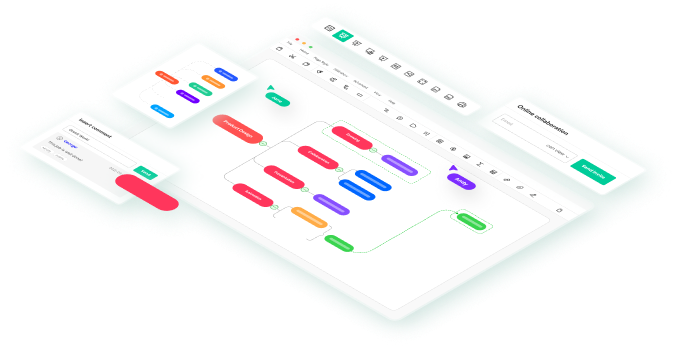
"The best way to have a good idea is to have lots of ideas." – Linus Pauling. This quote tells us why brainwriting practices are crucial. It's a method that enables people to think creatively without any disruption. As opposed to conventional brainstorming, brainwriting enables people to come up with ideas on their own prior to discussing them with a group.
In this article
What I've seen is that the majority of teams can't come up with ideas because of groupthink. Moreover, they face overpowering individuals taking over the conversation. Brainwriting solves that by making sure that everyone gets an equal say. Done well, it opens up other viewpoints and leads to better solutions.
In this article, you will see the five best practices for brainwriting. These practices will enable you to apply this technique with optimum effectiveness. Teams can enhance collaboration, facilitate ideation, and promote creativity by adopting these practices. Let us discuss the methods that make your brainwriting session super fun and effective!
When To Brainwrite?
The right method at the right time is required for successful idea generation. Brainwriting procedures work best when groups need diverse ideas. It should be under conditions of no group pressure. It is the optimal method of problem-solving, product development, and brainstorming sessions. It comes in handy when there is a tendency for a few voices to dominate the conversation.
Use brainwriting practices when:
- Teams consist of introverted members who are hesitant in vocal arguments.
- You must avoid letting dominant voices drown out the others or groupthink.
- Difficult problems need good writing instead of quick speech.
- Remote or hybrid teams need asynchronous, inclusive participation.
This approach also shines in the initial ideation stages where numbers count. It also works where cultural or hierarchical obstacles suppress open discussion. By giving priority to written input, you allow for a variety of viewpoints to emerge naturally.
Best Practices For Brainwriting To Try

Brainwriting can unleash the creativity of a team when executed strategically. Here are five top techniques for brainwriting that achieve a balance between structure and free-flowing ideation. We will present some real-world examples to illustrate their impact as well.
Establish Clear Goals
A good brainwriting session begins with a clear objective. The group must have a definitive problem statement or challenge to direct their thoughts. Otherwise, ideas become confused and useless.
Example: A marketing group convened to come up with ideas for a social media campaign. They set their objective to increase engagement among younger users. This clarity ensures that all ideas align with the general goal.
Utilize Time Constraints
Time limits create a sense of urgency. It prevents too much overthinking and provokes spontaneous thought. Short bursts of writing keep individuals on task and generate more creative ideas.
Example: In a product development meeting, the members can be asked to spend five minutes noting down all the ideas that come to mind. They can be on how the user interface of a mobile application can be enhanced. This tactic guarantees a fast flow of various propositions.
Turn Ideas for Expansion
Getting participants to build upon other people's ideas leads to more innovative solutions. Each person contributes new perspectives. This makes the ideas more valuable.
Example: A team of developers working on a new feature can brainstorm their early concepts together. One person can suggest the AI chatbot and another person can enhance it with a voice command capability.
Encourage Anonymity for Genuine Feedback
Anonymity removes hesitancy. This way members can put forward ideas without being criticized. Anonymity is especially useful in organizations with a hierarchy where junior employees would hesitate to come forward with ideas.
Example: In an organizational meeting, anonymous input can assist in initiating open discussions on making work more meaningful. This can reveal concerns that employees might not vocalize.
Combine Digital and Traditional Techniques
Utilizing online tools in combination with pen-and-paper methods increases flexibility. Online collaboration enables remote teams to contribute. This fosters inclusivity and more extensive idea-gathering.
Example: A virtual company can use online whiteboards or collaboration software to gather brainwriting ideas. This makes it easy to include team members from around the globe.
To maximize results, pair these strategies with tools like EdrawMind. It's an all-in-one collaboration software that will boost your brainwriting session to produce jaw-dropping ideas. Let’s discuss how to adapt these methods to your team’s unique dynamics.
Tips For Brainwriting

To maximize the effectiveness of your brainwriting sessions, consider these five practical tips:
Start with a Warm-Up Exercise
Start with a fast, unrelated brainstorming exercise. Ask the participants to brainstorm in one minute all the ways they can utilize a paperclip. This loosens everyone up and gets their minds ready for creative thinking. It also makes everyone at ease with the process.
Don't Over Explain the Topic
Giving too much background information can limit creativity. Instead of giving much information, give a clear and concise problem statement. Let participants learn about the challenge by themselves so that they can develop new ideas.
Use the "No Criticism" Rule
Just say that all ideas are welcome when coming up with new ideas. No one is allowed to criticize. This makes people think outside the box. It is all about having many unique ideas. A secure atmosphere makes creativity thrive.
Briefly Scan and Categorize Ideas
Once all the ideas are collected, sorting them into categories assists in identifying patterns. It then becomes easy to eliminate duplicates, enhance concepts, and develop strategies around common themes.
How to Overcome Challenges in the Brainwriting Method?
Brainwriting promotes diversity of thought and creativity. However, something can always go awry. Fixing these is key to successful sessions.
Brainwriting Challenges
- Idea Ownership and Bias: People hang on to their own ideas. This strong ownership may render them immune to feedback or other options.
- Groupthink: The group may decide on a single idea too fast. This prevents creativity and alternative solutions.
- Dominant Personalities: There are individuals who might dominate others. This overpowers quieter voices and suppresses input variety.
- Idea Evaluation: Biases in individuals interfere with judgment. Ideas are hard to evaluate objectively.
- Time Management: Sessions tend to last too long without structure. This leads to fatigue and loss of focus.
Solution to Challenges
Decrease Idea Ownership: Use anonymous idea submission via technology tools or shuffled cards. Ideas stand on merit, not ownership. Switch the presenters to avoid attachment.
Prevent Groupthink: Encourage thinking at various angles, for example, customer or competitor views. Use tools like "six thinking hats" for further detailed investigation.
Manage Dominant Personalities: Establish guidelines for equitable participation, i.e., time limits for each speaker. Utilize round-robin sharing so that all participate.
Evaluate Concepts Objectively: This can be done by having clear criteria, such as feasibility or impact. Apply a scoring method or decision matrix to prioritize the most promising options.
Improve Time Management: Set time constraints, e.g., 5 minutes to jot down ideas. Appoint a facilitator to keep these and speed up the group.
Final Remarks
Brainwriting is an exciting technique to increase creativity. It makes sure everyone in the team gets their voice heard. This method encourages openness where innovative thoughts can flourish without the fear of groupthink or overpowering individuals. By employing best practices for brainwriting, teams can come up with workable ideas.
These brainwriting practices allow groups to confidently and creatively solve difficult problems. With these techniques, you will discover plenty of hidden talent, create teamwork, and cultivate new ideas. The next time you are in a creative block, try brainwriting. You may discover that the ideas from each individual begin to flow like never before!




